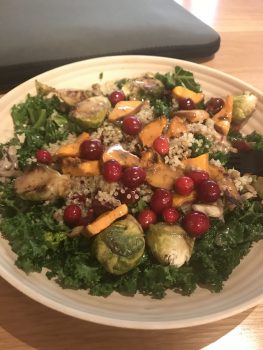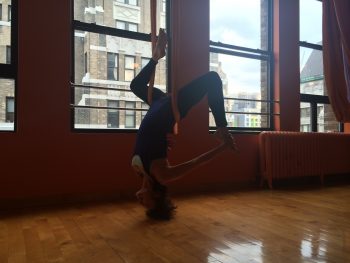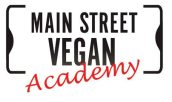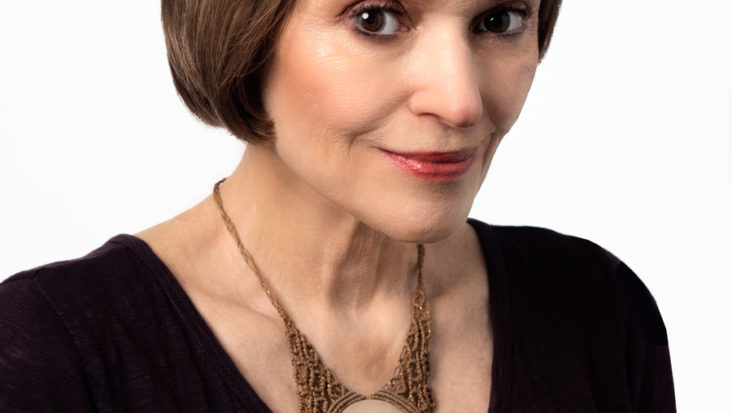16 Ways to Feel Forever Young, by Victoria Moran
We live in a culture that celebrates youth, but this is nothing new. Those explorers of yore didn’t sail the ocean blue looking for the Fountain of Middle Age. Still, we can expect to live most of our lives in the post-40 years, and although there is certainly no guarantee that our later years will be productive and disease-free, we can take steps to give us the best shot at a healthy old age.
- Love the age you are. You showed up on this planet at precisely the right time. Celebrate that. If you want to slow down and enjoy life at a certain point, enjoy that enormously. Or if you want to start a business, run for President, or sky-dive for your 80th birthday, all those options are available to you.
- Understand the 4 types of age: chronological (close to meaningless: check out any high school reunion and see how different all these people of the same chronological age appear); cosmetic (this is how you look – your body, your skin, the color and amount of your hair; some of the changes that occur over time are fixable, if you care to fix them, but it’s not the most important measure by any stretch); physiological (the biggie, how you’re aging on the inside – diet and exercise can work wonders here); attitudinal (maybe the most important of all: how you feel about yourself, your life, and your future).
- Eat plants, mostly raw, all you want. This is a paraphrase of Michael Pollan’s famous line, “Eat food, mostly plants, not too much.” When you move from plant-based to plant-exclusive, something amazing happens: you can eat satisfying quantities without worrying about your weight, and focus instead on getting plenty of beautiful, fresh foods with a high quantity of raw choices — salads, smoothies, berries, crudités, raw nuts and seeds – along with satisfying legumes and whole grains.
- Eat color. If you know nothing more about vegan nutrition than “Eat brightly colored natural foods and take a B12
 supplement,” you’re all set for making a start. I tell my audiences and clients: “Your plate and your shopping cart need to look like a Christmas tree: mostly green, with splashes of other bright colors. This is where the disease-preventing phytochemicals and antioxidants live.” The plant chemicals that preserve our cells and protect our health differ in the various colors of natural, plant foods. The free radical theory of aging suggests that rogue molecules called free radical damage our cells’ power course called mitochondria, resulting in ills we relate with aging: winkles, poor memory, organ breakdown. Colorful fruits and veggies (even white is a color in this context), as well as spices, protect again this.
supplement,” you’re all set for making a start. I tell my audiences and clients: “Your plate and your shopping cart need to look like a Christmas tree: mostly green, with splashes of other bright colors. This is where the disease-preventing phytochemicals and antioxidants live.” The plant chemicals that preserve our cells and protect our health differ in the various colors of natural, plant foods. The free radical theory of aging suggests that rogue molecules called free radical damage our cells’ power course called mitochondria, resulting in ills we relate with aging: winkles, poor memory, organ breakdown. Colorful fruits and veggies (even white is a color in this context), as well as spices, protect again this. - Consider age-protective supplements. Vitamin B12 is essential for vegans but also for anyone on any diet who reaches age 50. You may also need to supplement vitamin D if you live north of Atlanta, avoid the sun, use sun protection products, or have dark skin. Get your levels checked by your doctor and respond accordingly. Supplementing DHA/EPA, the fully formed Omega-3 fatty acids. This is why some omnivores take fish oil capsules but we can get DHA/EPA from algae (where the fish got them in the first place). You can get the Omega-3 fatty acid ALA from flax, chia, walnuts, and soy, but only a specialized blood test (easy to do but not always covered by insurance) can tell you how well your body does the job. When I had the test, my ALA levels were optimal, but DHA/EPA were low, and since these are the forms the body can use, particularly to protect against age-related memory loss, I’ve been supplementing ever since. You can also discuss with a nutritionally-oriented healthcare provider if your diet is providing sufficient iodine, zinc, selenium, and vitamin K2.
- Juice daily. Fresh, green juice is a transfusion of concentrated nutrition, which feels when I drink it like a shot of youthfulness and energy. Beet juice, mixed with milder juices such as carrot, celery, and apple has been shown help athletic performance; and carrot juice, although sweet and best mixed with celery, romaine, and other less sweet vegetables, has a long healing history (look up “Juiceman” Jay Korditch, the juicing superstar who passed away in 2017 at age 94, after overcoming cancer back in 1948); but it’s green juices, cut with lemon for better flavor and enhanced iron absorption, that you want to be ingesting for the most part.
- Hydrate in the way your body can best use the water. In other words, eat your water. Sure, drink water when you’re thirsty (or even when you’re hungry: sometimes the body’s call for water comes through as a desire for food), but the best water – naturally distilled andnaturally mineralized – is that found in fresh, raw fruits and vegetables. Check out The Water Secret, by dermatologist Howard Murad, MD, for more details on this.
- Stand up. Most of the time. Recent studies have shown that people who stand a great deal of the time are less likely to succumb to heart failure than people who sit a lot, even if they exercise regularly. Find a way to have a standing desk (you can buy one of those; I just put my laptop on the kitchen breakfast bar); get up every 55 minutes and walk or stretch or do some standing task until the top of the hour; stand when talking on the phone; stand on the bus or subway.
- Exercise. I know you knew this, but it may be more vital than anything else you’ll read here – and the older you get, the more important exercise becomes. Read Younger Next Year orYounger Next Year for Women, by Chris Crowley and Harry Lodge, MD, for a detailed explanation of how exercise isn’t just for cardiovascular efficiency, healthy metabolism, strong muscles, and strong bones, as valuable as these are. Even more critical is this fascinating fact of evolutionary biology: activity, and lack of it, are key to brain/body communication. Regular exercise sends the message that all is well and you’re here for the duration. When you’re sedentary, the message: “There’s a famine in the land. Let this body slow down and die.” (And, yes, the famine message goes through, no matter how much you’re eating.) Exercise = life and health and youthfulness, all the way to your DNA.
- More on that. . . You know that you need cardio, strength training, and flexibility exercise – 4 to 6 times a week on the cardio, 45 minutes ideally; at least twice for weight training; and some stretching morning and evening, as well as after exercise, so you don’t stiffen up and get, well, old. But if you’re currently sedentary and all that sounds like a huge undertaking, just move. Walk. Walk 5 minutes even. Do biceps curls with a couple of bottles of water. Just move enough to remind yourself that there is life below your neck. Do a little more every day.
- Invert yourself. Life can look right-side-up when you’re upside down – and the reversal of blood flow can be quite
 rejuvenating. People who regularly engage in inversion report improvements in their skin, hair, circulation, mental quickness, and overall attitude. If you’re trained in and able to do yoga inversions (headstand, shoulderstand), do those. Or get into aerial yoga, my favorite way to move. Alternatively, invest in a slantboard that will allow you to lie, sometimes, with your feet higher than your heart.
rejuvenating. People who regularly engage in inversion report improvements in their skin, hair, circulation, mental quickness, and overall attitude. If you’re trained in and able to do yoga inversions (headstand, shoulderstand), do those. Or get into aerial yoga, my favorite way to move. Alternatively, invest in a slantboard that will allow you to lie, sometimes, with your feet higher than your heart. - Love your lymphatics. This sweet system that keeps your body nice and detoxed doesn’t have a pump like the circulatory system does, so give it some help. All exercise is good, but the lymph system is especially fond of anti-gravity exercise – a mini-trampoline or a big bouncy ball (just sit on it and bounce) – and a special kind of massage called MLD, manual lymphatic drainage. Google MLD massage and see if there’s a practitioner in your area.
- Protect your skin from the sun. I know, I know: vitamin D…and the sun feels so good…and there’s documentation of the role it plays in curing various ailments. All true. But I’ve traveled the world and I’ve seen how people who’ve spent time in the sun look in old age, versus those who’ve stayed indoors (Tibetan nomads versus Tibetan nuns, for instance). Your choice of how you’ll relate to the sun is yours. I’m one for wearing hats with brims and wearing weight-lifting gloves all summer. If you choose to wear a sunscreen – I do – select a mineral block – titanium dioxide or zinc – instead of a chemical block.
- Sleep enough. We don’t honor sleep in our culture. We conflate it with laziness and lack of motivation, when instead it fuels activity and ambition. “Detox” is a buzz word these days, but seldom is it mentioned that it’s during sleep when the lion’s share of this detoxification takes place. According to Ayurveda, the ancient Indian healing tradition still recognized by the World Health Organization as a viable medical discipline, we do best going to bed early – by 10 ideally, 10:30 at the latest – and getting up around 6 or 6:30. Then we’re operating in concert with nature’s rhythms, and we’ll fall asleep more easily and awaken more refreshed.
- Meditate. Studies since the 1970s have shown great benefits to both physical and psychological health from the regular practice of meditation. One such study looked at the effect of sitting quietly for twenty minutes twice a day on the signs of aging. It showed that people who had meditated in this way for five years or more were twelve years youngerphysiologically that the control group. The physiological aging they looked at included blood pressure, cholesterol and blood sugar levels, joint flexibility, short-term memory, visual and auditory acuity, etc. There’s a lovely app for the iPhone and Android call Insight Timer that times your meditation and connects you with a global meditation community.
- Live for something bigger than you are. One reason vegans do so well as time passes may be that, in addition to the health benefits from eating whole plant foods, we’re deriving spiritual benefits from helping to lessen the suffering in this world. This alone infuses life with greater meaning. Volunteering, having a cause to work for, and believing in something great and grand and glorious is rejuvenation from the inside out.

Victoria Moran is an author, speaker, director of Main Street Vegan Academy, and host of the Main Street Vegan Podcast, training vegan lifestyle coaches and educators. Her 60s have been her best decade yet.


Love this whole post. Extremely well-written, thought-provoking, and full of recommendations for further reading, which is always appreciated. Thank you for taking the time to educate us on these life-changing acts.
Thanks, Natalie.
Great reading, a lot of informative tips
Thanks, Thomas.
This really sums it up!
I’m glad you found it useful.
This covers everything needed to be a super-healthy vegan. Thank you for sharing your wisdom, Victoria!
Thnku for this. Great encouragement!